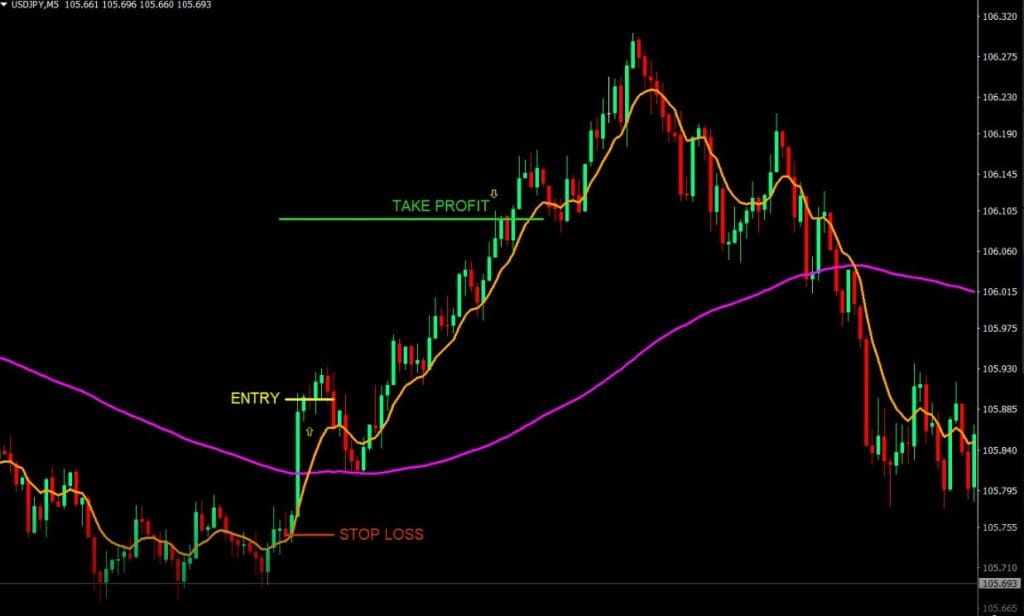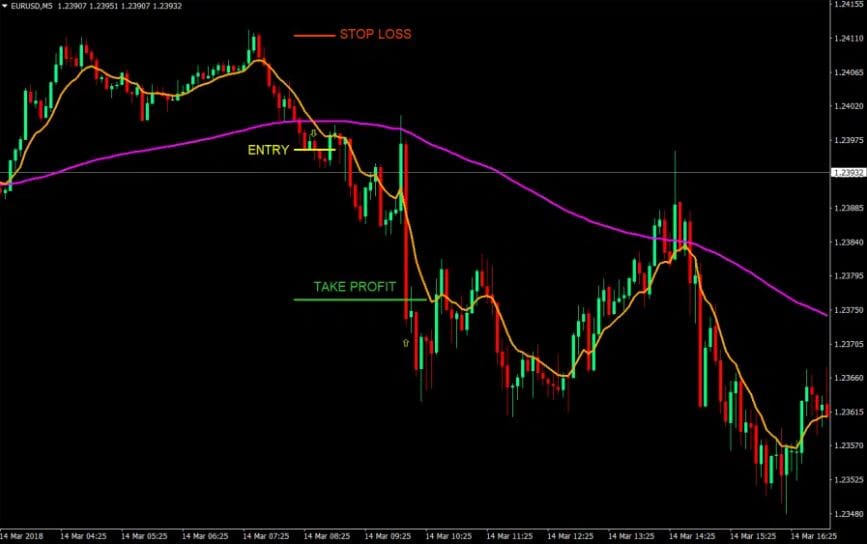Scalping in forex is often challenging, requiring precise timing and a reliable strategy. However, some simple strategies, when executed consistently, can yield impressive results. One such strategy is the 20 Pips a Day Forex Scalping Strategy, which focuses on major currency pairs like EUR/USD, GBP/USD, and USD/JPY. This strategy leverages the volatility of the London and New York sessions, aiming to make small, quick profits with a simple moving average crossover system.
The goal is to target 20 pips per trade, using a combination of a fast-moving average and a slow-moving average to signal trades. This Forex Scalping strategy’s beauty lies in its simplicity and mechanical nature—perfect for traders looking for a straightforward, repeatable system.
Trading Sessions and Pairs
- Currency Pairs: EUR/USD, GBP/USD, USD/JPY (due to their tight spreads and volatility)
- Best Trading Sessions: London and New York sessions (avoid the Asian session, as it tends to have lower volatility)
Strategy Setup: Moving Average Crossover
This strategy relies on two moving averages:
- 5 Smoothed Moving Average (SMA) – Orange Line: This fast-moving average represents short-term momentum in the market.
- 144 Weighted Moving Average (WMA) – Magenta Line: This slow-moving average represents the broader market trend.
Buy Setup:
- Entry Signal: When the 5 SMA (Orange) crosses above the 144 WMA (Magenta), it indicates a bullish momentum shift. Enter a buy trade as soon as the crossover occurs.
- Stop Loss: Set the stop loss 15 pips below the entry price to protect against sudden market reversals.
- Take Profit: Aim for 20 pips to take profit. When the trade reaches five pips in profit, move the stop loss to breakeven to eliminate risk.
Sell Setup:
- Entry Signal: When the 5 SMA (Orange) crosses below the 144 WMA (Magenta), it signals a bearish trend. Enter a sell trade at the crossover point.
- Stop Loss: Set the stop loss 15 pips above the entry price.
- Take Profit: Target 20 pips to take profit and trail the stop loss to break even once the trade moves five pips in profit.
Download a Collection of Indicators, Courses, and EA for FREE
Example Trade Setups
Buy Example:
- The 5 SMA crosses above the 144 WMA, signaling a bullish trend.
- Place a buy order immediately after the crossover.
- Set the stop loss 15 pips below the entry point.
- Target 20 pips for the take profit.
- If the trade moves five pips in your favor, move the stop loss to breakeven to secure the position.

Sell Example:
- The 5 SMA crosses below the 144 WMA, indicating a bearish market condition.
- Enter a sell trade following the crossover.
- Set the stop loss 15 pips above the entry price.
- Aim for a 20 pips take profit.
- Move the stop loss to breakeven once the trade reaches five pips in profit.

Risk Management and Profitability
This strategy relies on a 4:3 reward-to-risk ratio. With a 20-pipe take profit and a 15-pipe stop loss, traders lock in a favorable risk profile. The key to this strategy’s success is trailing the stop loss to breakeven as soon as the trade reaches five pips in profit, reducing the potential for losses and improving the win-loss ratio.
Although 20 pips may seem small, it’s achievable given the high volatility during the London and New York sessions. Moving the stop loss to breakeven early in the trade minimizes downside risk, even in less favorable conditions.
Free Download 20 Pips a Day Forex Scalping Strategy MT4 Template
Read More Forex Hedge Fund Strategy for FREE
Conclusion
The 20 Pips a Day Forex Scalping Strategy is effective for traders who prefer a mechanical and repeatable system. Unlike many other crossover strategies, this one emphasizes quick profits and limits risk with predefined stop loss and take profit levels. Targeting just 20 pips per trade provides an achievable daily goal, mainly when trading during the high-volatility London and New York sessions.
Additionally, the key to success lies in trailing the stop loss to breakeven once the trade moves five pips in profit, locking in the safety of the position while allowing for potential gains. While this strategy is simple, it can be tweaked based on personal preferences, such as adjusting the stop loss or taking profit levels to suit different market conditions.





